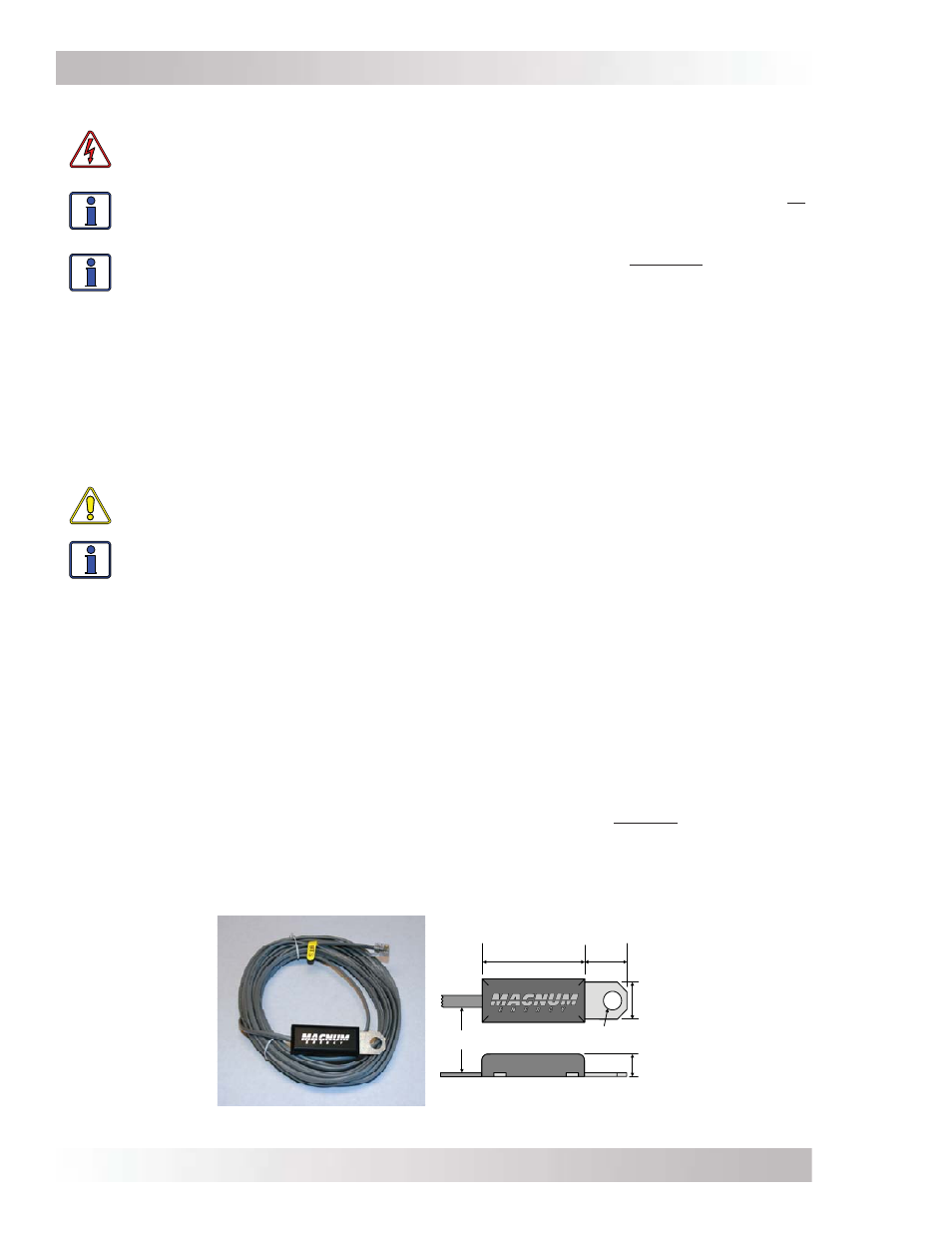Installation – Magnum Energy RD Series User Manual
Page 23

©
2010 Magnum Energy, Inc
Page 17
Installation
2.4.4
Wiring the Battery Bank
WARNING: Lethal currents will be present if the positive and negative cables attached
to the battery bank touch each other. During the installation and wiring process, ensure
the cable ends are insulated or covered to prevent touching/shorting the cables.
Info: DO NOT connect the DC wires from the battery bank to the inverter until: 1) all
DC and AC wiring are completed, 2) the correct DC and AC overcurrent protection have
been installed, and 3) the correct DC voltage and polarity have been verifi ed.
Info: For the RD Series inverter/charger to perform optimally, a minimum battery bank
of 200 AH is recommended for moderate loads (<1000W) and greater than 400 AH for
heavy loads (≥1000W).
Depending upon the voltage of the batteries you use in the installation (6 or 12 VDC), the batteries must
be wired in series, parallel, or series-parallel to provide the correct voltage (see Appendix B - Battery
Information for guidance on wiring batteries together). The interconnecting DC wires must be sized
and rated exactly the same as those that are used between the battery bank and the inverter.
Place the batteries as close as practical to the inverter, preferably in an insulated and ventilated
enclosure. Allow adequate space above the batteries to access the terminals and vent caps (as
applicable). Also, allow at least 1” (2.5 cm) of space between the batteries to provide good air
fl ow. DO NOT mount the batteries directly under the inverter.
CAUTION: Install batteries in a well ventilated area. Batteries can produce explosive
gases. For compartment/enclosure installations, always vent batteries to the outside.
Info: To ensure the best performance from your inverter system, batteries should be of
the same size, type, rating, and age. Do not use old or untested batteries.
2.4.5
Battery Temperature Sensor Installation and Wiring
The Battery Temperature Sensor (see Figure 2-7) provides the inverter with precise battery
temperature information to automatically adjust the ABSORB and FLOAT charge voltage set-
points. This enables the batteries to be correctly charged under extreme temperature changes.
If the temperature sensor is NOT installed and the batteries are subjected to large temperature
changes, battery life may be shortened.
The BTS provided may be extended to a maximum length of 40’ (12 m) using a RJ11 connector
(female to female) and a standard phone cable with RJ-11 connectors. However, your inverter to
battery cable length shouldn’t exceed the recommended distance shown in Table 2-2.
To install the BTS:
Attach the ring terminal end of the Battery Temperature Sensor to the negative battery terminal;
see Figure 2-5 for proper connection to the battery terminal.
Route the sensor’s cable to the inverter following existing wire runs.
Connect the RJ11 connector end of the BTS cable to the yellow-labeled BTS Port on the
inverter (see Figure 1-1, Item 6).
1.
2.
3.
Figure 2-7, Battery Temperature Sensor
F RO NT V IE W
S ID E V IE W
~2"
~1"
~½ ”
0 .375 " diam eter
Cable
~¾ ”
